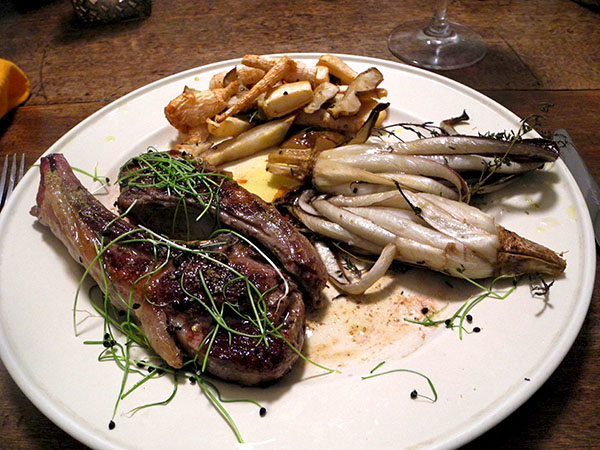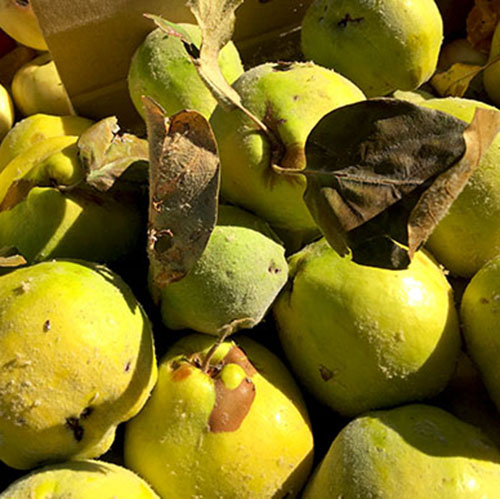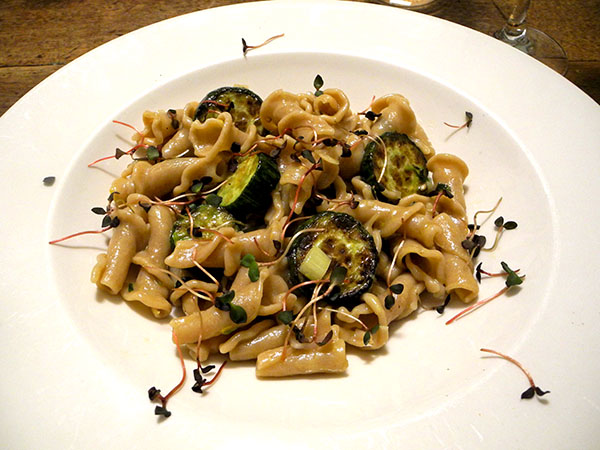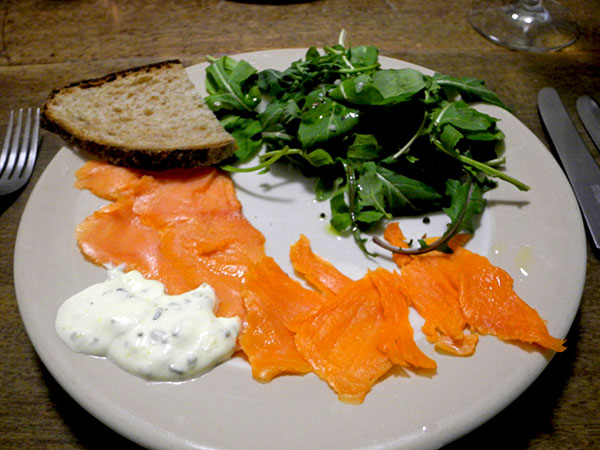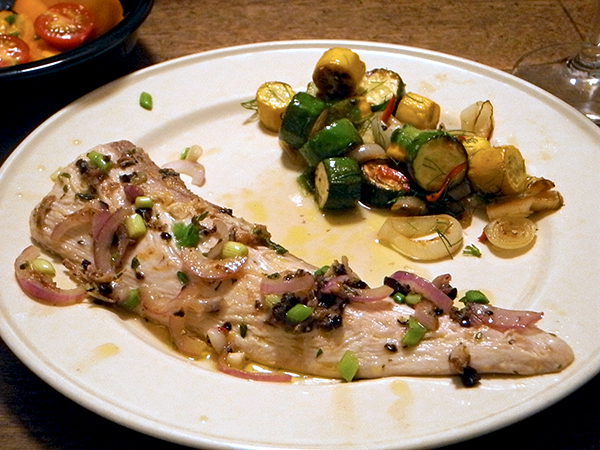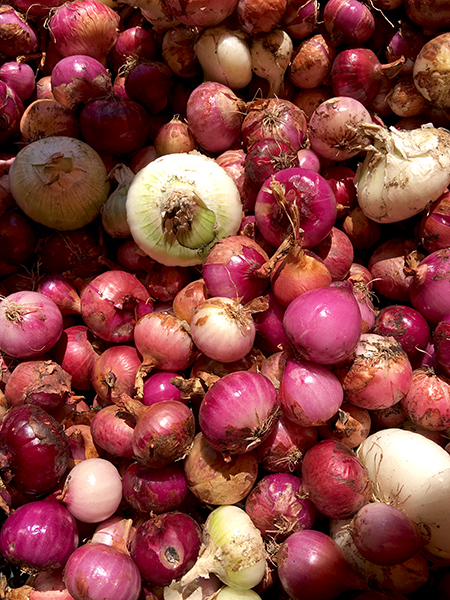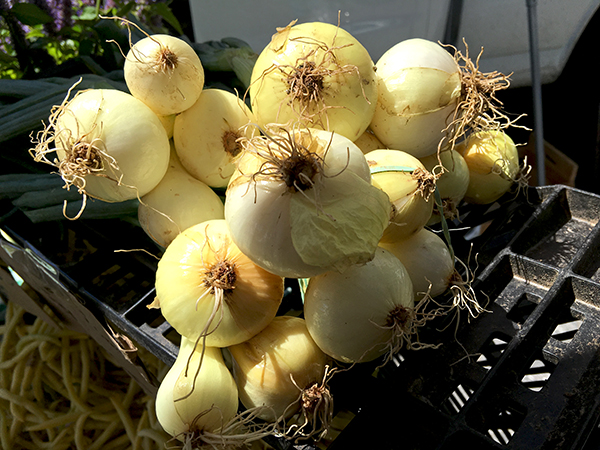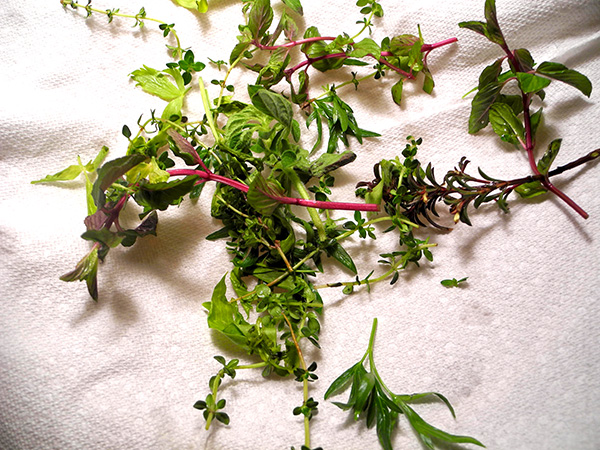
The salumi course incorporated 3 different national traditions, but it still looked Italian.
- two ounces of Fermin Salchichón Ibérico dry-cured sausage from the Chelsea Foragers Market, made from the ‘pata negro’ breed of pig (Iberico pork, salt, nutmeg, black pepper, white pepper, plus seasoning which consisted of sugar, trisodium citrate, sodium nitrate, and potassium nitrate), drizzled with a bit of Frankies 457 Sicilian olive oil, the gift of a friend
- wild cress from Lani’s Farm, dressed with more of the olive oil, a bit of Maldon salt, and some freshly-chopped black pepper
- slices of an organic sourdough baguette from Bread Alone
The pasta was something of a highbrid as well, although it too looked more Italian than anything else.
The Italian for red-veined sorrel? I think its ‘acetosa venata di rosso‘, if you can find it.
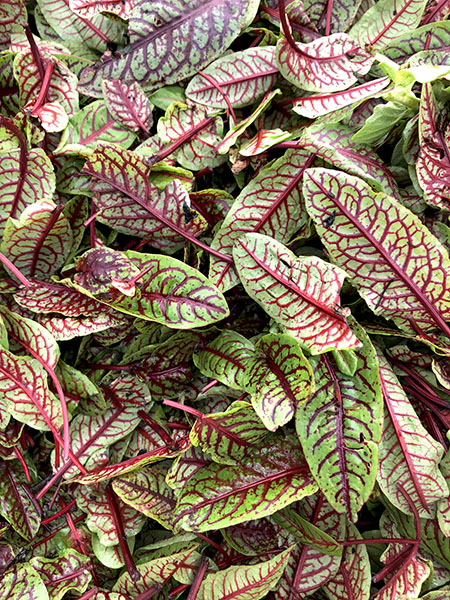
- two handfuls of red-veined sorrel leaves from Lani’s Farm, roughly chopped, folded into 3 ounces of softened Organic Valley ‘Cultured Pasture Butter’, along with more than a teaspoon of juice and the same amount of zest from an organic Whole Foods Market lemon, seasoned with sea salt and freshly-ground black pepper, scraped onto a sheet of plastic wrap or wax paper, rolled into a log and placed inside the refrigerator until ready for use to initiate a sauce once 12 ounces of fresh pasta had been cooked al dente and drained (specifically, a fettuccine from Raffetto’s of New York City, whose ingredients are only durum flour, whole fresh eggs, and water, purchased at the Chelsea Foragers Market), the sorrel butter placed over a low flame inside a large antique tin-lined copper pot to melt, the pasta added, and then most of 2 ounces of toasted pine nuts as well, everything mixed well before the pasta was slipped into 2 bowls, sprinkled with the remaining pinoli, and garnished with shaved Parmigiano Reggiano Hombre from Whole Foods Market [I forgot to add a garnish of an ounce of micro red amaranth from Windfall Farms I had planned to include]
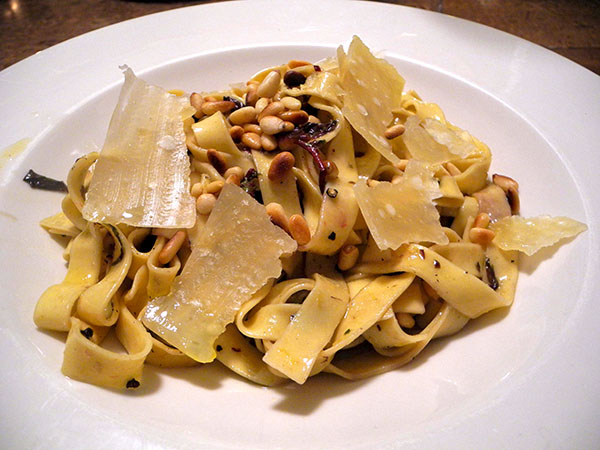
- the wine was an Italian (Piedmont), Erbaluce di Caluso ‘La Torrazza’, Ferrando 2014, from Astor Wines
- the music was the album, ‘Robin de Raaff, Entangled Tales‘
